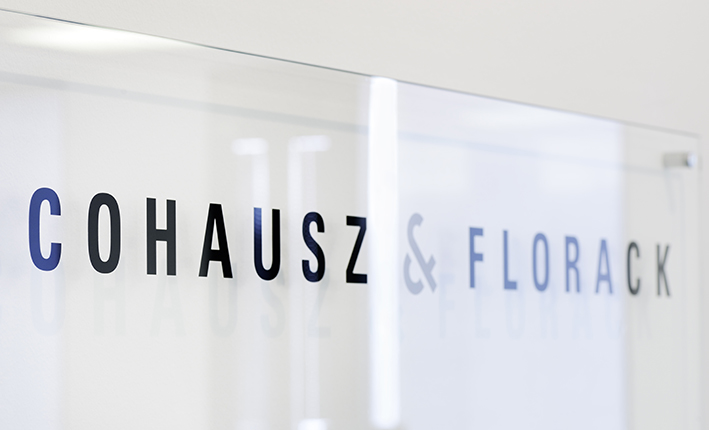The case underlying G 4/19 dealt with a European patent application directed to the prevention and treatment of allergic diarrhea, where the application in question claimed priority from a European patent granted to the same applicant for exactly the same (“100% identical”) subject matter. The Examining Division refused the application under Art 97(2) EPC “in conjunction with Article 125 EPC”, which prescribes that “in the absence of procedural provisions in this Convention, the European Patent Office shall take into account the principles of procedural law generally recognised in the Contracting States”. The Examining Division based its refusal on the principle of the prohibition on double patenting referred to in decisions G1/05 and G1/06.
The applicant appealed the case, arguing that it had a legal interest in obtaining a second patent on the same subject matter as the patent derived from the later filed application offered a year of additional patent protection due to the later filing date (the 20-year patent term is calculated from the filing, not the priority date).
The Board of Appeal then referred three questions and two invitations to the EBA.
Referral Question 1:
Can a European patent application be refused under Article 97(2) EPC if it claims the same subject-matter as a European patent which was granted to the same applicant and does not form part of the state of the art pursuant to Article 54(2) and (3) EPC?
There had been debate prior to G 4/19 whether double patenting prohibition could even be a legal basis for refusing a European patent application, since there is no explicit provision in the EPC for it. The EBA now concluded in G 4/19 that Art. 125 EPC indeed provides a legal basis for the regulation of double patenting.
It had been argued in the past that Art 125 EPC is a procedural provision and therefore could not extend to substantive issues, like the refusal under Art 97(2) EPC. The EBA acknowledged in G4/19 that A 125 EPC may be procedural in nature - both due to its wording and its systematic position under the EPC chapter titled “Common provisions governing procedure” – but this does not exclude it from requiring substantive examination. The EBA follows up by drawing the parallel to Art 123 (2) EPC, which is also a “procedural provision” that is likewise systematically located under the same “Common provisions governing procedure” Chapter of the EPC, but is a well-accepted means for refusal during prosecution under Art 97(2) EPC.
The EBA’s decision on double patenting was also based on an intensive review of the preparatory documents of drafting the EPC, finding that there was clear legislative intent to prohibit double patenting as a generally recognized principle, and that there is no reason to conclude that anything has changed since the drafting of Article 125 EPC.
Referral Question 2.1:
If the answer to the first question is yes, what are the conditions for such a refusal, and are different conditions to be applied depending on whether the European patent application under examination was filed
a) on the same date as, or
b) as a European divisional application (Article 76(1) EPC) in respect of, or
c) claiming the priority (Article 88 EPC) in respect of a European patent application on the basis of which a European patent was granted to the same applicant?
In response to this question, the EBA clarified that the prohibition of double patenting is a general principle that an applicant should not be able to obtain the same patent twice for the same invention in the same designated States. This is not only applicable to parent-divisional pairs or other pairs which have the same filing date, but it also extends to application-patent pairs that claim the same priority date (i.e. have the “same effective” filing date).
Thus, there is no special condition that would provide different application of this principle to priority pairs than to any other type of application-patent pairs.
Referral Question 2.2:
In particular, in the last of these cases, does an applicant have a legitimate interest in the grant of a patent on the (subsequent) European patent application in view of the fact that the filing date and not the priority date is the relevant date for calculating the term of the European patent under Article 63(1) EPC?”
The EBA states that the answer to this question is the same as to Referral Question 2.1, namely that the prohibition applies to all three constellations identified. It did not go into further depth here, nor did it respond to the direct invitation of the referring Board to clarify the conditions of “the same invention”.
Unfortunately the application-patent pair underlying G 4/19 had identical subject matter, and therefore the EBA did not feel compelled to address this extraneous issue that was irrelevant to the case at hand.
“In our opinion, G 4/19 offers no reasons for the EPO to deviate from its current practice that only the double-patenting of more or less identical claims is prohibited.” says Dr. Natalie Kirchhofer, patent attorney and partner at C&F. “A mere overlap of claim scope should not be detrimental and applicants are encouraged to argue against such misinterpretations of G 4/19 and, if needed, to appeal any adverse decision taken in this regard in order to gain legal certainty on this important matter post G 4/19.”
As a reminder, in G2/10 the EBA expressly acknowledged that an applicant may be interested in obtaining a first quicker protection for a preferred embodiment and pursue the general teaching in a divisional application. The EBA noted that "The applicant may, for example, be interested in obtaining a first quicker protection for a preferred embodiment and pursue the general teaching in a divisional application. Whether or not and, if so, under what circumstances, in such a case a disclaimer would be necessary in order to avoid the so-called prohibition on double protection is a different matter. It is sufficient to say that such procedural behaviour is not abusive and even legitimate."
Similarly, the Board of Appeal in T 1391/07 (see point 2.6 of the reasons) referred to decisions G 1/05 and G 1/06, and saw no basis for extending the bar to double patenting to
“cover claims not defining the same subject-matter but conferring... a scope of protection overlapping with each other only partially in the sense that some, but not all of the embodiments notionally encompassed by one of the claims would also be encompassed by the other one of the claims.” (emphasis added)
In T 587/98 the Board of Appeal came to a similar conclusion (see point 3.7 of the reasons):
“[T]he board concludes that there is no express or implicit provision in the EPC which prohibits the presence in a divisional application of an independent claim - explicitly or as a notional claim arrived at by partitioning of an actual claim into notional claims reciting explicit alternatives - which is related to an independent claim in the parent application (or patent if, as in the present case, it has already been granted) in such a way that the 'parent' claim includes all the features of the 'divisional' claim combined with an additional feature.” (emphasis added)
Along the same lines the Board of Appeal in T 1491/06 ruled that a claim of a divisional application that was narrower than the claim of the parent patent did not fall under the prohibition of double patenting (see points 3.2 to 3.4 of the reasons). Similar lines of reasoning and decisions can be found in a number of further decisions (see e.g. T 2461/10, T 2402/10, T 877/06).
In fact the EBA in G 4/19 expressly distinguished between double patenting (identical claim scope) and what it calls double protection (overlapping claim scope). This strongly speaks towards the bar on double patenting that has now been confirmed by the EBA to only apply to the former (identical claim scopes) and not the latter (overlapping claim scopes).
As Dr. Lauren Schweizer, patent attorney at C&F summarizes: “The new decision G 4/19 is very specific to the fact pattern and subject matter identity at issue there. Given that applicants have a legitimate interest in obtaining patents with overlapping claim scopes – be it for the purposes of obtaining a quicker grant of a narrower scope or for licensing considerations – the EPO should not interpret more into G 4/19 than what has actually been decided.” It therefore remains to be seen whether G 4/19 will at all change the current practice of the EPO regarding double patenting.
Picture credits: concept w – AdobeStock.com




